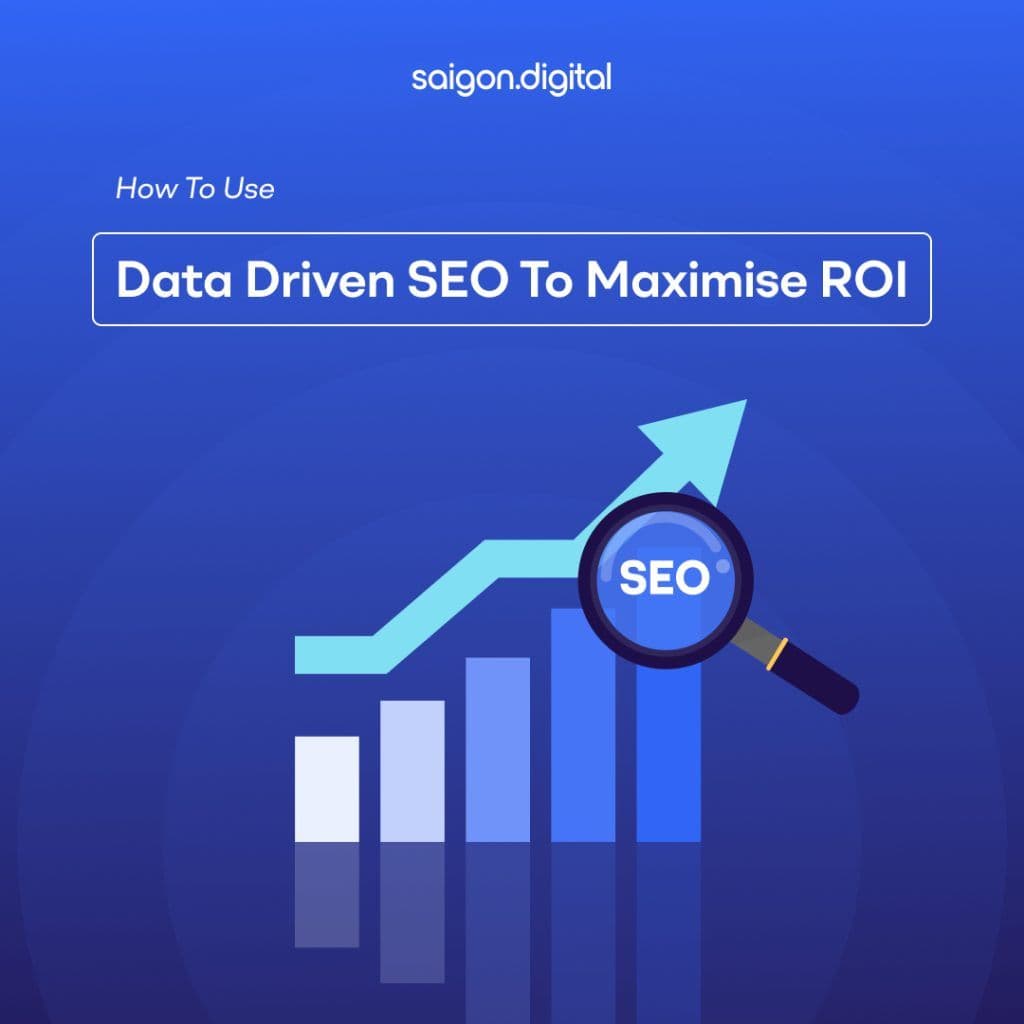
What is Data Driven SEO?
Before diving into the "how", it’s essential to understand the "what". Data driven SEO refers to the practice of using quantitative and qualitative data to inform every decision made within an SEO strategy . Rather than relying on gut feelings, SEO myths, or outdated practices, you base your strategy on real numbers, patterns, and user behaviours. You let the data tell the story: what’s working, what’s not, and where the greatest opportunities lie. From that information, you can then begin crafting an appropriate strategy which could drive results and maximise ROI.Why Data Driven SEO Matters for ROI
When you invest in SEO, you want results, specifically, more traffic, leads, and revenue. However, poorly targeted SEO efforts can drain your budget and time. This is where data driven SEO comes in. Data will ensure that every pound spent is justified, that each effort is strategically targeted to bring measurable returns. To get even more specific, here are some key benefits you might want to consider:- Better decision-making: Data points you towards strategies that are proven to work.
- Higher conversion rates: You align your content and SEO with actual user needs and behaviours.
- Reduced wasted spend: You stop investing in keywords or tactics that don't yield results.
- Scalable growth: You can replicate successful strategies systematically.
How to Use Data Driven SEO to Maximise ROI
Now, it’s time we get practical. We’ve talked about theories, now here’s how you can harness data driven SEO to deliver serious results.1. Define Clear SEO Goals Aligned with Business Objectives
Every effective strategy starts with clear goals. It’s wise to first ask yourself these types of questions:- Are you aiming to increase brand awareness?
- Do you want more qualified leads?
- Is boosting e-commerce sales your top priority?
2. Conduct Comprehensive Keyword Research Based on Real Data
Gone are the days of simply guessing keywords. Now with advanced technology and the ever evolving nature of AI, SEO tools are readily at your service. You can make use of tools such as SEMrush, Ahrefs, Google Keyword Planner, and Google Search Console. These allow you to pull actual search volumes, keyword difficulty scores, CPC values, and user intent behind queries which could aid you in crafting the perfect content for your target audience. Example : Instead of blindly targeting “digital marketing agency”, data might reveal that “affordable digital marketing agency in London” has slightly less competition but a much higher conversion rate. Action Step : After conducting keyword analysis , build your keyword strategy around a mix of:- High-volume keywords for brand visibility
- Long-tail, high-converting keywords for immediate ROI
- Low-competition keywords for quick wins
3. Analyse Your Current SEO Performance
You can't know where you're going until you know where you are. Use tools like Google Search Console, Google Analytics 4, and Screaming Frog to conduct site audits to find current issues that need fixing and to understand user behaviours better. Besides, by using these tools, you can discover which pages on your website are doing well or others that need a little more work. When doing a website audit, focus on:- Which pages are attracting traffic
- Which keywords you currently rank for
- Bounce rates and dwell times
- Pages with high exit rates
Traffic Channels: Where Our Users Come From
Looking at a sample of GA4 data, we reviewed user acquisition (how new users find and land on our website) trends over the past year. The majority of our website traffic consistently comes from Direct and Organic Search channels, with Organic Search showing steady growth month-over-month.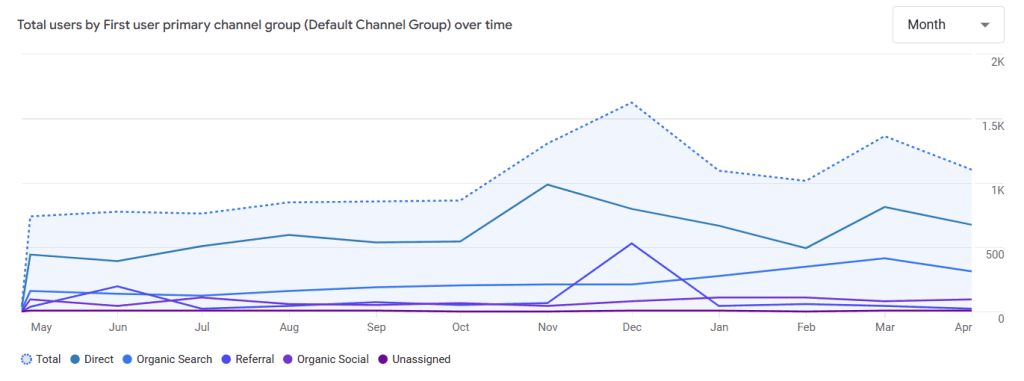
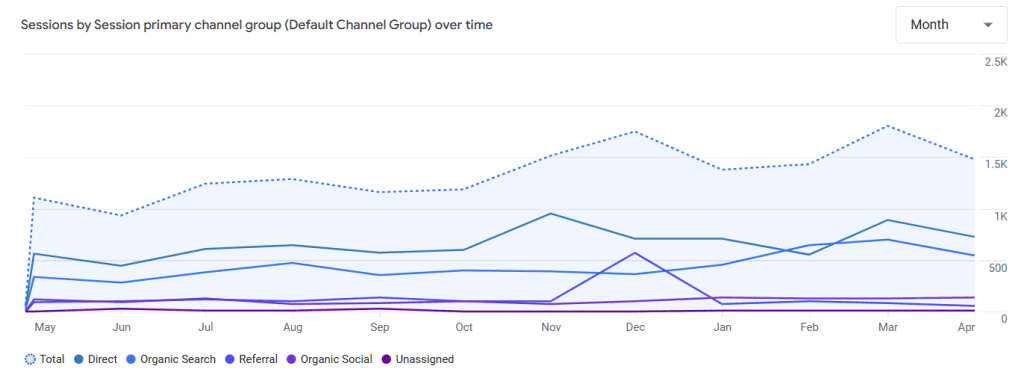
Landing Pages: What Content Users Engage With
When we broke down the traffic by landing pages, we discovered that one blog post: “Implementing Refresh Tokens with Next.js and NestJS” continues to drive a large portion of user sessions. Despite being a technical article, it performs like a high-ranking evergreen SEO asset.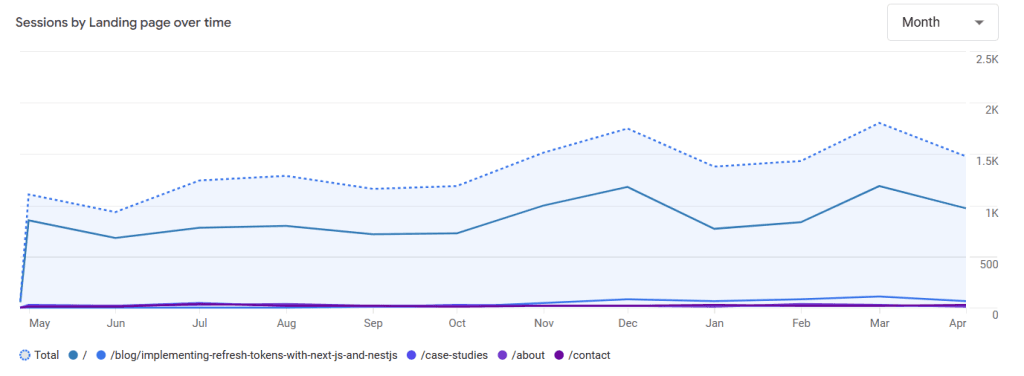
Engagement Metrics: How Well We’re Holding Attention
Lastly, we looked at user engagement over time. The GA4 dashboard shows an average engagement time of 56 seconds and about 0.8 engaged sessions per active user in the past 12 months. Not bad for B2B content, but certainly an area with room for improvement.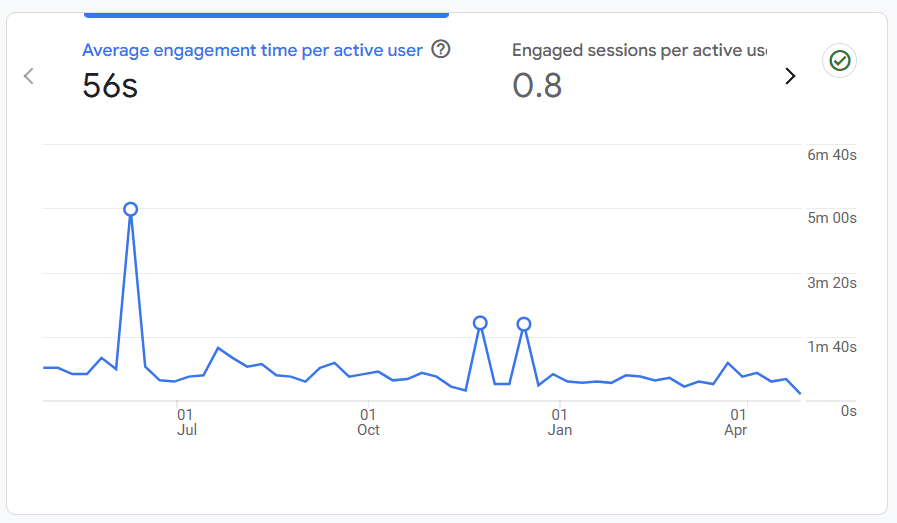
- Your top-performing channels by engagement and conversion
- Landing pages that attract users but need better UX or CTAs
- Pages with low engagement that may require content or design updates
- Pages that are almost ranking on page 1 (positions 11–20). A little optimisation (better content, internal links) can push them to the top, delivering fast ROI.
4. Build Data Driven Content Strategies
Content is the fuel of SEO. But rather than writing blindly, data should guide what you create. Here are a few ways to gather content data:- Content gaps: Use competitor analysis tools like Semrush or Ahrefs to find content topics your rivals rank for, but you don’t.
- Search intent analysis: With every keyword, there’s usually an intent behind it when people search for the keyword. Use tools such as Semrush and Ahrefs to uncover whether users want a blog post, product page, or video.
- Content performance: Use Google Search Console to measure which types of content on your website (guides, reviews, videos) deliver the most conversions.
5. Optimise On-Page SEO with Precision
Data driven on-page SEO involves:- Using keyword placement backed by search behaviour
- Structuring content based on top-ranking page formats
- Enhancing user experience through data on click-through rates and heatmaps
6. Leverage Technical SEO Data
Technical SEO can make or break your performance. It's not just about having a "pretty website", it's about a site that loads fast, is mobile-friendly, and easily crawled by Google. To gain insights into the technical aspect of your website, consider using data from:- PageSpeed Insights
- Google Lighthouse
- GTmetrix
- Google Mobile-Friendly Test
7. Monitor and Adjust Based on Real Results
SEO being a one time thing is one the biggest misconceptions you can ever have the misfortune to make for your website. SEO is a continuous and conscious effort in boosting your website performance and driving traffic. You should regularly check in on the behind-the-scenes aspects of your website to ensure nothing is amiss. Utilize free SEO tools like Google Search Console and Google Analytics to track these metrics and to generate a monthly report for future reference:- Keyword movement
- Organic traffic growth
- Conversion rates
- Revenue attribution from organic channels
8. Use Predictive Analytics to Forecast SEO Impact
It’s not enough to make decision for the now. You should also be looking towards the future. By using historical data, you can, in some ways, predict future SEO performance. This could help you anticipate trends and provide you precious time to formulate the appropriate strategy: Tools like SEOmonitor and Forecast Forge can estimate:- Potential traffic increases from ranking improvements
- Estimated revenue boosts from traffic gains





